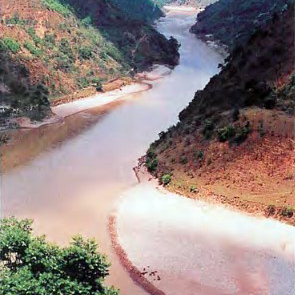งานวิจัยและบทความ

แม่น้ำโขงกำลังจะตาย: ผลกระทบจากโครงการพลังงานน้ำและการพัฒนาเส้นทางการเดินเรือของประเทศจีน
โดย Tyson R. Roberts
เผยแพร่เมื่อ 19 มิถุนายน 2024
การจัดการทรัพยากรธรรมชาติและสิ่งแวดล้อม
แหล่งจัดเก็บทรัพยากรต้นฉบับ
Natural History Bulletin of the Siam Society (NHBSS) , Vol. 49, No. 2, 2001
ดาวน์โหลด
Killing the Mekong: China’s Fluvicidal Hydropower-Cum-Navigation Development Scheme
China intends to develop Lancang or Mekong mainstream hydropower in Yunnan and make the Mekong mainstream navigable from Yunnan for some 2,500 km to the South China Sea. This poses unprecedented environmental and social problems for the downstream countries Myanmar, Laos, Thailand, Cambodia and Vietnam. Severe ecological deterioration of the Mekong River is a foregone conclusion if this project is carried out but of course impacts will not be limited to the river. The downstream countries will be forced to undertake exhausting and largely futile efforts to protect themselves and make up for the damage to their agriculture, fisheries, forests, and way of life. Cambodia and Vietnam, the two countries farthest down-stream, will benefit little and will experience the worst negative impacts from the scheme. Particularly at risk are Cambodia's Great Lake and Vietnam's Plain of Reeds and the Mekong Delta. China itself will not be immune to adverse impacts. Of particular concem will be sedimentation of the Lancang hydropower dam reservoirs. Sediment in the Lancang main-stream, already great, is likely to increase due to larger and more frequent landslides and other effects brought about by the dams and their reservoirs, as well as increased rainfall due to global warming. The effective lifetime of China's Lancang hydropower dams is likely to be much closer to 30 years than to the 100 years foreseen by project proponents.